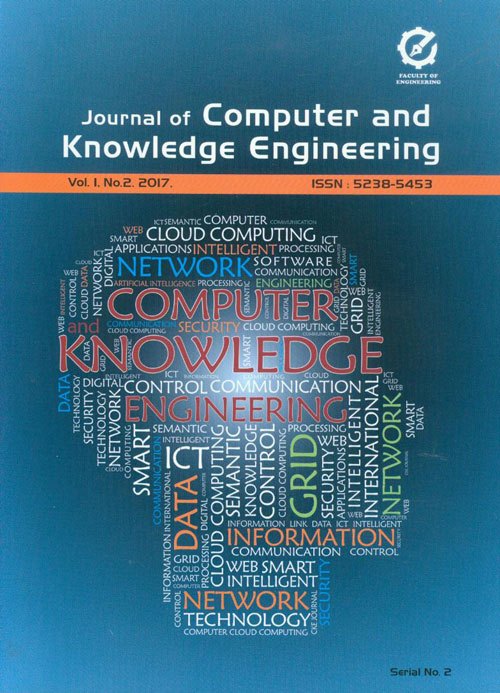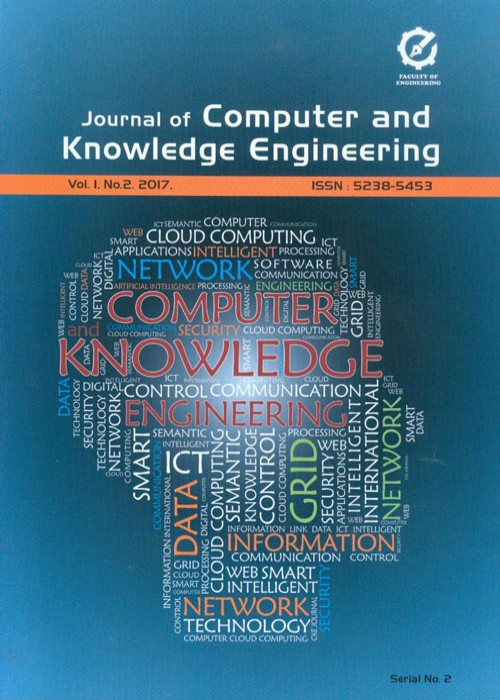فهرست مطالب

Journal of Computer and Knowledge Engineering
Volume:3 Issue: 1, Winter-Spring 2020
- تاریخ انتشار: 1400/10/22
- تعداد عناوین: 3
-
-
Pages 1-10
In the recent years, the Internet of things (IoT) applications have affected many aspects of human life due to the continuous innovation in hardware, software, and communication technologies along with the growth of the connected devices. The enormous amounts of data generated by these devices must be stored and then processed for analysis and decision-making. One promising solution for this purpose is cloud computing. However, offloading tasks to the cloud imposes costs that must be reduced by intelligent techniques and optimization algorithms. Fortunately, considering cloud computing instances with dynamic pricing referred to as spot instances can significantly reduce the processing costs. Although these instances offer a considerable cost reduction compared to on-demand instances, they can be evicted by the cloud providers and require special scheduling techniques. In this paper, we propose a dynamic scheduling method for IoT task offloading on Amazon EC2 spot instances. The proposed method considers both the predicted execution time of the task and the specified deadline that can be mapped on spot instances. The empirical results denote that the proposed method leads to a considerable reduction in the execution costs, while it simultaneously increases the number of successful tasks executed before the deadline and decreases task turnaround time.
Keywords: Index terms, Cloud Computing, The Internet of Things, Spot instances, Task offloading -
Pages 11-24The goal of this research is to create a reference data model for educational and research institutes of Iranian Ministry of Sciences, Research, and Technology. After investigating existing technologies and considering the problem context, ontology was chosen as the data model format. In order to create the target ontology, an ontology construction methodology was designed and implemented. This methodology is created using design science research method and contains an architecture, a detailed workflow process, a guideline for performing 1each step, and related softwares in an integrated web-based system. The designed system is implemented in PHP and is available as open source. The system is used as the main tool to construct the target ontology. The proposed methodology leverages the three main knowledge sources including textual documents, existing ontologies in the higher education domain, and reverse engineering of a relational database of an integrated university system. The resulted product of this methodology was evaluated based on the data requirements of the Ministry of Sciences, Research, and Technology, and its shortcomings were resolved. The novelty of this work is both on the generated product, that is, a localized reference data model, and an ontology construction methodology.Keywords: Ontology Development, Higher Education Ontology, Ontology Learning
-
Pages 25-37This paper proposes new algorithms to improve Reinforcement Learning (RL) and Deep Q-Network (DQN) methods for path planning considering uncertainty in the perception of environment. The study aimed to formulate and solve the path planning optimization problem by optimizing the path, avoiding obstacles, and minimizing the related uncertainty. In this regard, a reward function is constructed based on the weighted features of the environment images. In this study, Deep Learning (DL) is used for two purposes. First, for perceiving a real environment to find the state transition matrix of the mobile robot path planning problem, and second, for extracting the features of state directly from an image of the environment to select the appropriate actions. To solve the path planning problem, it is formed in the context of an RL problem, and a Convolutional Neural Network (CNN) is used to approximate Q-values as a linear parameterized function. Implementing this approach improves the Q-learning, SARSA, and DQN algorithms as the new versions, called POQL, POSARSA, and PODQN. The learning process results show that using newly improved algorithms increases path planning performance by more than 20%, 21%, and 5% compared to the Q-learning, SARSA, and DQN, respectively.Keywords: Reinforcement learning, deep Learning, Q-learning, Path planning, Deep Q-Network (DQN)


